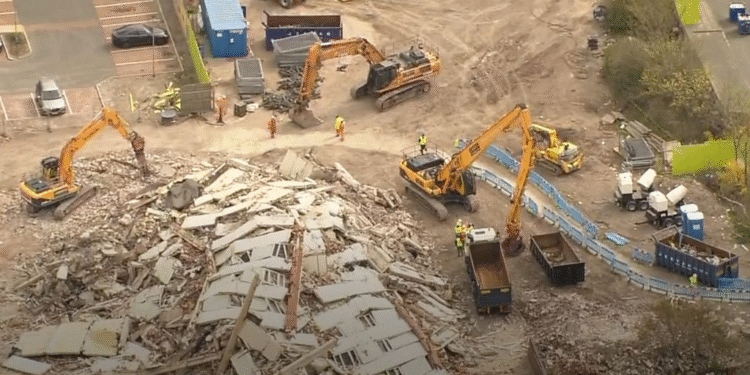Accurate construction takeoffs are the backbone of every successful construction project. They form the foundation for cost estimation, labor planning, and materials procurement. But as critical as they are, takeoffs can be rife with mistakes that lead to inaccurate estimates, costly delays, or wasted resources.
Understanding what a takeoff entails is the first step. For those unfamiliar, construction takeoff quantifies all the materials necessary for a project from blueprints or digital models, breaking them down into measurable units like square footage, linear feet, or cubic yards. This essential step paves the way for precise costing and smoother project execution.
For a deeper understanding and guidance on improving your takeoffs, check out this resource: What does takeoff mean in construction?
Below, we’ll explore the most common mistakes construction professionals make during takeoffs and how to avoid them.
Ignoring the importance of detailed plans
Why it’s a problem
One of the most significant mistakes is starting your takeoff without reviewing comprehensive, updated plans. Outdated blueprints or incomplete scopes of work can lead to incorrect calculations, overlooked materials, and unrealistic budgets.
How to avoid it
- Verify project documents: Before starting, ensure you have the latest versions of all relevant plans and specifications.
- Ask for clarifications: If details are unclear, consult with the project’s architect or engineer to fill in gaps.
Detailed and accurate plans are the foundation of successful construction takeoff, so never overlook this step.
Relying too heavily on manual methods
Why it’s a problem
While manual takeoffs using rulers, grids, and calculators may work for smaller projects, they are time-intensive and prone to human error. Miscalculations, overlooked measurements, or inconsistent data recording can spiral into massive errors in project estimations.
How to avoid it
- Adopt digital takeoff software: Use tools that can automate measurements and calculations. Many platforms integrate directly with cost estimation software, improving accuracy and saving time.
- Recheck critical calculations: A quick manual review ensures nothing looks unusual or out of place, even with software.
Leaning on technology isn’t just about reducing effort; it’s also about boosting precision and efficiency across every stage of the takeoff process.
Overlooking small but critical details
Why it’s a problem
When performing takeoffs, it’s easy to focus on the primary materials like concrete, beams, or drywall while overlooking smaller but crucial components. Items such as fasteners, adhesives, and caulking can significantly impact costs.
How to avoid it
- Create a comprehensive checklist: Include everything from primary materials to smaller items like screws and bolts.
- Consult the specs: Double-check the project specifications to ensure all necessary materials are accounted for.
The small details can add up and ultimately throw off your project’s final budget.
Failing to account for material waste
Why it’s a problem
Underestimating material waste can lead to shortages, delays, and extra costs. Whether it’s due to cutting, installation mistakes, or shipping damage, waste is inevitable and must be factored into your calculations.
How to avoid it
- Apply standard waste allowances: Each material has standard waste rates (e.g., 10% more for tile flooring). Use industry benchmarks based on material type to include appropriate buffers.
- Monitor past data: Study similar past projects for waste patterns and adjust your future estimates accordingly.
Accounting for waste ensures you have the right resources to complete your job smoothly.
Neglecting labor and equipment costs
Why it’s a problem
Construction takeoffs are primarily concerned with material quantities, but it’s easy to forget the labor and equipment needed to install those materials. This oversight can lead to incomplete or inaccurate cost estimates.
How to avoid it
- Integrate takeoffs into estimations: Use systems or workflows that link takeoff data to labor and equipment estimates for a holistic view of project costs.
- Review historical data: Leverage data from previous projects to better understand the time and equipment required for similar tasks.
Remember, materials are only part of the equation. Labor and equipment play an equally critical role in your overall project costs.
Misusing or underutilizing digital tools
Why it’s a problem
While digital tools have revolutionized the construction industry, misusing or underutilizing these systems can create issues. Errors can occur if software capabilities are misunderstood or opportunities for automation and optimization are missed.
How to avoid it
- Invest in training: Train your team on the tools they use. This improves accuracy and ensures you’re maximizing your platform’s functionality.
- Choose an intuitive platform: Opt for user-friendly software that integrates well with your existing systems.
Technology is only as good as its users. Proper training and platform selection make all the difference.

Ignoring site-specific variables
Why it’s a problem
Failing to account for site-specific conditions like soil properties, local climate, or logistical challenges can result in underestimating project costs and complications.
How to avoid it
- Conduct a site visit: Before finalizing your takeoff, visit the site to note any unique variables that could affect material needs or production timelines.
- Work closely with stakeholders: Engage contractors or engineers familiar with the site to identify and address specific challenges early.
Project sites are as unique as the structures built on them. Ensure your takeoffs reflect that reality.
Underestimating review and validation
Why it’s a problem
A rushed or unchecked takeoff leads to errors that ripple through an entire project, increasing costs and causing delays. Accuracy requires thorough review and validation.
How to avoid it
- Double-check quantities: Review each material list for discrepancies after completing your takeoff.
- Validate third-party data: Cross-reference external sources or software-generated data with project specs to ensure consistency.
Allocating time for reviews and validations may delay the process slightly, but ensures the final takeoff meets the highest level of accuracy.
Streamline your process with strategic tools
Mastering a construction takeoff is much easier when you streamline your workflow. Tools that integrate takeoff data with cost estimation platforms save time, reduce risk, make collaboration easier, and provide reliable metrics for future projects.
Conclusion
From ineffective tools to overlooked details, execution errors during the takeoff process can derail your project before it even begins. By understanding and avoiding these common mistakes, you can ensure your estimates are accurate, your resources are allocated efficiently, and your projects stay on budget and schedule.
The key lies in preparation, detail, and the strategic use of tools designed to enhance efficiency and accuracy. Start by evaluating your current methodology and investing in technologies or processes that eliminate inefficiencies.
Avoiding these mistakes will improve your project outcomes and position you as a reliable professional in the construction industry. Start your next project knowing your takeoff process will set it up for success.












